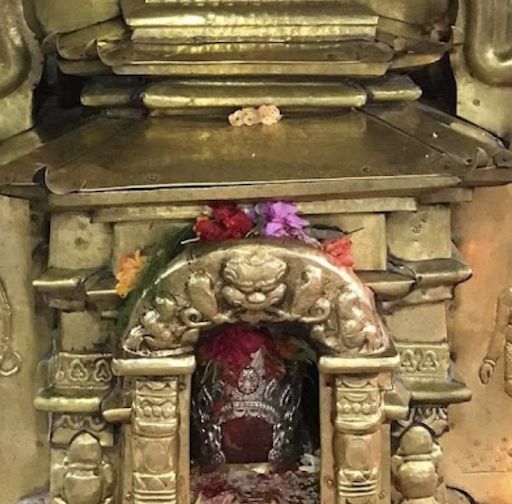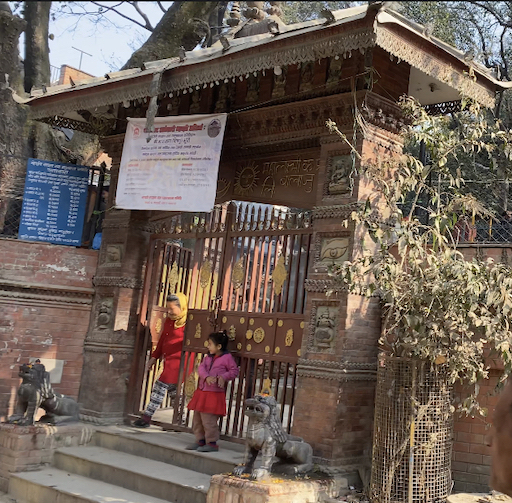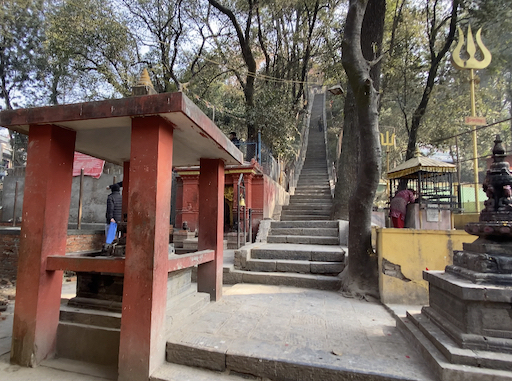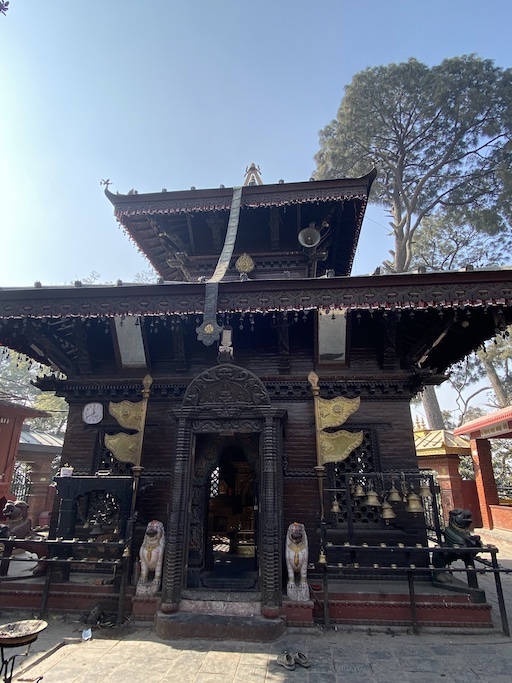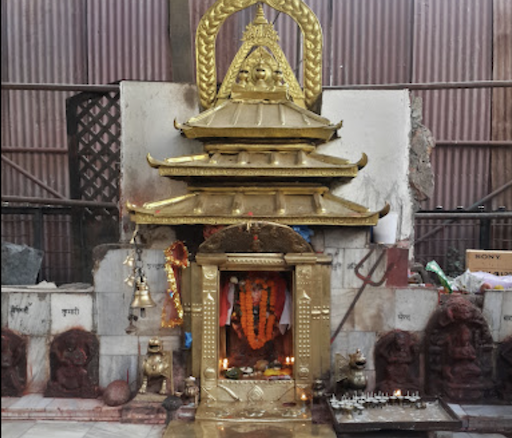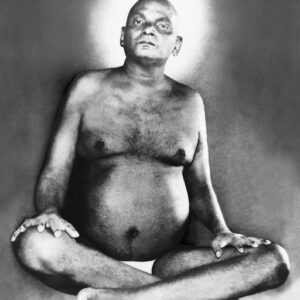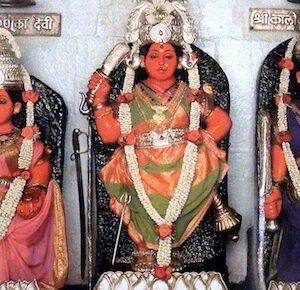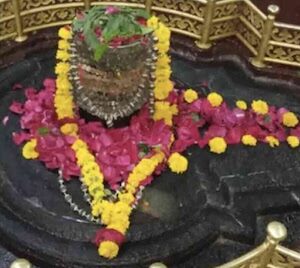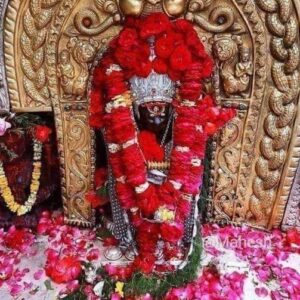This is a consecrated temple of Mhepi Ajima Yogambar Gyaneshwari. You can make offerings and go close to the Devi. There is space to sit and meditate. You can go into meditative states effortlessly here.
The original position of the deity was on the slope. Since many devotees faced difficulties, the deity is now moved to a new temple close to the original location.
How to get there
This temple is located 2 kms north of Swayambhunath, on the top of hill. Once you reach there, there are two hiking paths leading to the top of the hill. One is short but steep and another winding but not steep.
Map: https://goo.gl/maps/4od8oaRYumupbYVX8
About Mhepi Ajima
The temple is strongly connected with Shantikar Acharya who sacrificed his son for the deity. The child body was buried in this hill. Today, the statues of the deities in the valley are made only by using the soil from that place.
About Shantikar Acharya, First Vajracharya
The inconspicuous temple of Shantipur, “City of Peace,” is located on the north side of Swayambhu Hill. Shantipur is regarded as the most sacred and secret of all the esoteric shrines of Newar Buddhism. Dedicated to Chakrasamvara, it is said to cover the entrance to an underground network of rooms that connects with the hidden inner core of the Swayambhu Stupa. The first vajracharya of Newar Buddhism, the tantric master Shantashri or Shantikar Acharya, is believed to still reside in these caves to this day, in a rainbow body or as a Chakrasamvara icon. No one is allowed to enter the temple other than vajracharya priests, although visitors are permitted to enter as far as the porch.
King Prachanda Dev becomes Shantikar Acharya to protect Swayambhu Dharmadhatu
It was when King Prachanda Dev was meditating on the Vajrakuta Parvata, Manjushri appeared to him, and explaining that in the next era, the Kali Yuga, it would be difficult to preserve the Swayambhu Dharmadhatu, he instructed the king to build a stupa to cover and protect it. Accordingly the king took the Vajracharya ordination as a necessary prerequisite for building the stupa and was thereafter known as Shantikar Acharya.
Then he covered the Swayambhu Dharmadhatu with a precious stone and built a stupa with the images of the five tathagatas around it. He also built the temples of the five elements Vayupur, Vasupur, Agnipur, Nagpur, and Akasapur (Currently known as Shantipur), and retired to the Akasapur Temple to meditate. It is said that he is still there in samadhi, in one of the lower rooms of that temple.
Read More:
http://mhayepiajima.org.np/en/
